Invited Speakers
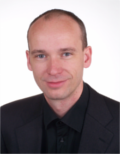
Falko Dressler
Visit Homepage
Abstract: We discuss challenges and solutions to enable ultra low power communication systems. In the field of sensor networks, this question has been investigated for multiple decades now. However, only the combination of technological and algorithmic methods eventually helps designing next generation systems. Using the application scenario of wildlife monitoring, in particular bats, explore the need for novel solutions given the high reliability requirements and weight restrictions. We go stepwise through a series of hardware, signal processing, and coding solutions that we developed. Our concepts have been explored both in large-scale simulation as well as in first field experiments.
Falko Dressler is full professor of computer science and chair for Distributed Embedded Systems at the Heinz Nixdorf Institute and the Dept. of Computer Science, Paderborn University. Before moving to Paderborn, he was a full professor at the Institute of Computer Science, University of Innsbruck and an assistant professor at the Dept. of Computer Science, University of Erlangen. He received his M.Sc. and Ph.D. degrees from the Dept. of Computer Science, University of Erlangen in 1998 and 2003, respectively.
Dr. Dressler is associate editor-in-chief for Elsevier Computer Communications as well as an editor for journals such as IEEE Trans. on Mobile Computing, IEEE Trans. on Network Science and Engineering, Elsevier Ad Hoc Networks, and Elsevier Nano Communication Networks. He has been guest editor of special issues in IEEE Journal on Selected Areas in Communications, IEEE Communications Magazine, Elsevier Ad Hoc Networks, and many others. He has been chairing conferences such as IEEE INFOCOM, ACM MobiSys, ACM MobiHoc, IEEE VNC, IEEE GLOBECOM, and many others. He authored the textbooks Self-Organization in Sensor and Actor Networks published by Wiley & Sons and Vehicular Networking published by Cambridge University Press. He has been an IEEE Distinguished Lecturer as well as an ACM Distinguished Speaker.
Dr. Dressler is an IEEE Fellow as well as an ACM Distinguished Member, and member of the German computer science society (GI). He also serves on the IEEE COMSOC Conference Council and the ACM SIGMOBILE Executive Committee. His research objectives include adaptive wireless networking, self-organization techniques, and embedded system design with applications in ad hoc and sensor networks, vehicular networks, industrial wireless networks, and nano-networking.
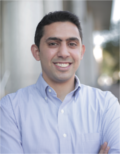
Kassem Fawaz
Visit Homepage
Abstract: For more than two decades since the rise of the World Wide Web, the “Notice and Choice” framework has been the governing practice for the disclosure of online privacy practices. The emergence of new forms of user interactions, such as voice, and the enforcement of new regulations, such as the EU’s recent General Data Protection Regulation (GDPR) promises to change this privacy landscape drastically. In this talk, I will discuss the challenges towards providing the privacy stakeholders with privacy awareness and control in this changing landscape. I will also present our recent research on utilizing AI to analyze privacy policies and settings.
Kassem Fawaz is an Assistant Professor in the ECE department at the University of Wisconsin - Madison. His research interests include the security and privacy of the interactions between users and connected systems. His work on privacy has been featured in several media outlets, such as Wired Magazine, the Wall street Journal, the New Scientist Magazine and ComputerWorld. He earned his Ph.D. in Computer Science and Engineering from the University of Michigan.
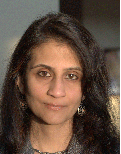
Monisha Ghosh
Visit Homepage
Abstract: This paper describes the design and deployment of a functional Wireless Underground Sensor Network (WUSN) on a university campus. This is an unique system that is operational over a large area and over a long period of time, providing real time monitoring of the environment with the data being curated and displayed on an open website. The system details, including the architecture, node design, user interface, and deployment are provided. Initial measurement results are analyzed to show the functionality and performance of the system.
Dr. Monisha Ghosh joined NSF as a rotating Program Director in September 2017, in the Computer and Network System (CNS) division within the Directorate of Computer & Information Science and Engineering (CISE). She manages wireless networking research within the Networking Technologies and Systems (NeTS) program. Dr. Ghosh is also a Research Professor at the University of Chicago, with a joint appointment at the Argonne National Laboratories, where she conducts research on wireless technologies for the IoT, 5G cellular, next generation Wi-Fi systems, coexistence, and machine learning for predictive oncology. Prior to joining the University of Chicago in September 2015, she worked at Interdigital, Philips Research and Bell Laboratories, on various wireless systems such as the HDTV broadcast standard, cable standardization and on cognitive radio for the TV White Spaces. She has been an active contributor to many industry standards and was recognized with a Certificate of Appreciation for her outstanding contributions to IEEE 802.22. She is a Fellow of the IEEE. She received her Ph.D. in Electrical Engineering from the University of Southern California in 1991, and her B. Tech from the Indian Institute of Technology, Kharagpur (India) in 1986.
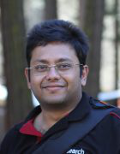
Saikat Guha
Visit Homepage
Abstract: DataMap is the underlying technology platform that powers much of Microsoft’s technology stack for complying with privacy legislation worldwide, including with EU’s GDPR regulation. It grew out of a Microsoft Research project published in Oakland ‘2014. This talk chronicles key moments and insights from DataMap’s journey from a research project to a production system.
Saikat Guha is a researcher at Microsoft Research in India. He is broadly interested in systems approaches to improving privacy. His recent projects are focused on safeguarding user privacy in a way that does not disrupt the emerging business models behind the cloud, online social networks, and mobile ecosystems. Saikat received his PhD and BS from Cornell University in 2009 and 2003. He co-authored the RFC that now serves as the best-practice for building TCP support in NATs and firewalls. In 2012, he was named one of MIT Technology Review's TR-35 (35 young innovators under 35) for his work in privacy preserving systems.
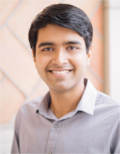
Swarun Kumar
Visit Homepage
Abstract: This talk presents the challenges and opportunities of building a city-scale low-power wireless internet-of-things. We build upon low-power wide-area networking (LP-WAN), a technology that enables low-cost devices with a 10-year battery to communicate at few kbps to a base station, kilometers away. Yet, deploying LPWANs in large urban environments is challenging, given the sheer density of nodes that causes interference, coupled with attenuation from buildings that limits signal range. I present Choir [SIGCOMM '17], a system that overcomes these challenges despite the limited capabilities of base station and client hardware. Choir proposes novel techniques, that disentangle and decode large numbers of interfering transmissions at a simple, single-antenna LP-WAN base station. I also present Charm [IPSN'18 best paper] that shows how teams of LP-WAN base stations can collaborate to decode signals from extremely far away clients even if their signals are undetectable at any single base station. Beyond communication, I also touch upon the opportunities of an omnipresent low-power Internet. I present two solutions RF-Wear [UBICOMP '18] and WiSh [MobiSys'18] that make our own bodies and clothes shape-aware and connected to the Internet for wireless and seamless fitness and health monitoring.
Swarun Kumar is an assistant professor at CMU where heads the laboratory for emerging wireless technologies (WiTech lab). He designs and builds novel systems that leverage a deep understanding of the wireless physical layer to enable faster wireless networks and new services. Swarun is a recipient of the Google Faculty Research award, several best paper awards and the George Sprowls Award for best Ph.D thesis in Computer Science at MIT.
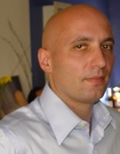
Giovanni Pau
Visit Homepage
Abstract:Mobile autonomous systems are posed to deeply impact in manufacturing, space exploration, rescue, defense, transportation, and everyday life. For example, fleets of autonomous air-ground vehicles employed in emergency, situation-awareness, and surveillance missions. Air vehicles can cover a large area with high speed being able to be present in both time and space while they have limited energy and autonomy. On the other hand, ground vehicles have long endurance and are capable of covering relative locations with greater accuracy, yet restricted to traveling on the road network. Combining the strengths of air and ground vehicles can enable new scenarios. Air vehicles can take a timely view of the disaster area to assess the severity of damage and can inform ground vehicles about the road network conditions around the emergency or accidental sites. Air vehicles may serve as relay points and be equipped (i.e. GPU) to serve as mobile edge-computing nodes, thus supporting air-ground communications and computational needs. Currently, these systems, are mostly self-contained data and AI-based applications operating on the same node, however there is an emerging need for cooperation, communication, and coordination as "self-contained" and purely "cloud-based" solutions may not be sufficient to handle growing task sizes and complexity. Intel estimates that each driver-less car will produce about 4TB of data every day. The majority of such data will be consumed locally, yet some will be transmitted for further processing and to enrich the global driving knowledge and/or trigger human actions.
In this talk I will describe some of the challenges exposed by air-ground mobile edge and propose some of the possible approaches and solutions for connectivity and data dissemination.
Giovanni Pau is the smart mobility chair at the Sorbonne Université, in Paris France. He holds the Italian Laura in Computer Science and the PhD in Computer Engineering awarded by the University of Bologna in 1998 and 2002 respectively. Before Joining Sorbonne Université Dr. Pau was with the UCLA Computer Science Department where he retains the position of Adjunct Professor.
Dr. Pau core research interests are in Network Systems with focus on Vehicular Networks and pervasive mobile sensor systems. He designed and built the UCLA campus vehicular testbed and the UCLA/MPI urban sensing testbed designed to enable hands-on studies on vehicular communications and urban sensing. His research contributions lead to the VERGILIUS and CORNER simulation suites designed to support mobility and propagation modeling in urban environments. More recently, Dr. Pau designed and developed VNDN the Named Data Network (NDN) protocol stack specifically adapted to work on mobile-to-mobile scenarios.
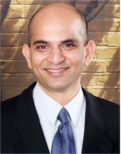
Ajit Rao
Visit Homepage
Abstract: Boundless VR/AR experiences are mobile, immersive, photorealistic, and ultra-responsive (low latency). Such experiences are possible through a split processing architecture that partitions the workload intelligently between a mobile device and powerful edge servers accessed over 5G. This architecture has many benefits, such as reliable anywhere anytime usage and ease of use with no setup or wires. It is only possible because of low-latency, high-bandwidth 5G networks. The solution offers the best of both worlds – boundless mobile VR/AR experiences with photorealistic visuals in a sleek, affordable headset.
Dr. Ajit Rao is senior director of engineering at Qualcomm India where he heads Multimedia Systems, Research & Development. In addition, Ajit also leads world-wide engineering for Qualcomm's eXtended Reality (XR) research efforts. XR includes Augmented Reality (AR), Virtual Reality (VR), and Mixed Reality (MR). Ajit has a B.Tech. degree from IIT Madras (ECE), and MS & Ph.D. degrees (EE, machine learning) from University of California, Santa Barbara. He was an early employee of voice coding start-up SignalCom, acquired by Microsoft in 2000. Ajit worked on Windows Media Audio at Microsoft until 2002 when he moved to Texas Instruments, India. In TI, he grew and led the multimedia codecs team for all of TI's platforms including OMAP and DaVinci and drove systems architecture for TI's complex video chips. In 2011, Ajit served as a technologist (biometrics) on Govt. of India's ambitious 'Aadhaar' project which has > 1.1B users today. Subsequently, he co-founded and led technology for social video streaming startup, Vivaldi. Vivaldi's app Stringo was among the top 20 apps on the Android App Store (Social) in 2013. Ajit is a co-author on several issued US patents and 30+ technical publications in the areas of virtual reality, embedded systems, multimedia and machine learning.
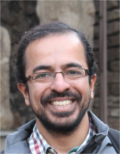
Aaditeshwar Seth
Visit Homepage
Abstract: We attempt to make two arguments in this essay. First, through a case study of a mobile phone based voice-media service we have been running in rural central India for more than six years, we describe several implementation complexities we had to navigate towards realizing our intended vision of bringing social development through technology. Most of these complexities arose in the interface of our technology with society, and we argue that even other technology providers can create similar processes to manage this socio-technological interface and ensure intended outcomes from their technology use. This is different from the typical laissez-faire assumption that market fueled rapid scaling of technology will find a way to lead to positive social development outcomes without any dedicated efforts to manage the socio-technological interface. We then build our second argument to find an approach that can ensure that the organizations behind both market driven technologies and those technologies that are adopted by the state, pay attention towards responsibly managing the socio-technological interface. We advocate for the technology engineers and researchers who work within these organizations, to take up the responsibility and ensure that their labour leads to making the world a better place especially for the poor and marginalized. We outline possible governance structures that can give more voice to the technology developers to push their organizations towards ensuring that responsible outcomes emerge from their technology. We note that the examples we use to build our arguments are limited to contemporary information and communication technology (ICT) platforms used directly by end-users to share content, and hence our argument may not generalize to other ICTs.
Aaditeshwar Seth is an associate professor in the Department of Computer Science at IIT Delhi, where he runs the ACT4D (Appropriate Computing Technologies for Development) research group. He graduated with a PhD degree from the University of Waterloo in Canada in 2008, and completed his B.Tech from IIT Kanpur in 2002. Aaditeshwar is passionate about building technologies for social development. He won the Knight News Challenge award in 2008 to start an organization, Gram Vaani, which builds low-cost voice-based systems for community media in rural areas. Gram Vaani’s technologies and work done by Aadi's students are now in use by over 150 developmental organizations in India, Africa, Afghanistan, and Pakistan, where collectively more than 2 million people have directly touched their platforms. Several elements of their work have also been adopted by government departments in India for scaleup, and have influenced the use of ICTs for development within many international aid and development organizations.
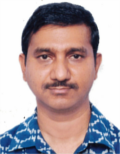
Giridhar Yasa
Visit Homepage
Abstract: Applications in a cloud environment tend to be micro-services that talk to each other via APIs (typically RESTful), are loosely coupled and rapidly changing. Dependencies between these applications can help with identifying critical paths, failure modes of business flows that routinely span micro-service chains. However, In a dynamic environment as this, it is difficult to keep up with dependencies. This talk is about a system we built at Flipkart that uses network connections between VMs to drive application intelligence that allows us to keep track of dependencies, and has several other potential applications.
Giridhar Yasa is a principal architect at Flipkart and leads architecture for Flipkart's cloud platform. He works across data center technologies, infrastructure services (compute and networking), storage and supporting platform services. Prior to Flipkart, he was with the advanced technology group of the CTO office at NetApp, and a volunteer developer for the Debian GNU/Linux project.
Over the years, he has built systems for solving a variety of problem in technology domains like - radio link control in mobile handsets, applications for low power devices, satellite networking, internet access and security devices, enterprise class storage software, and web scale distributed systems
.


























